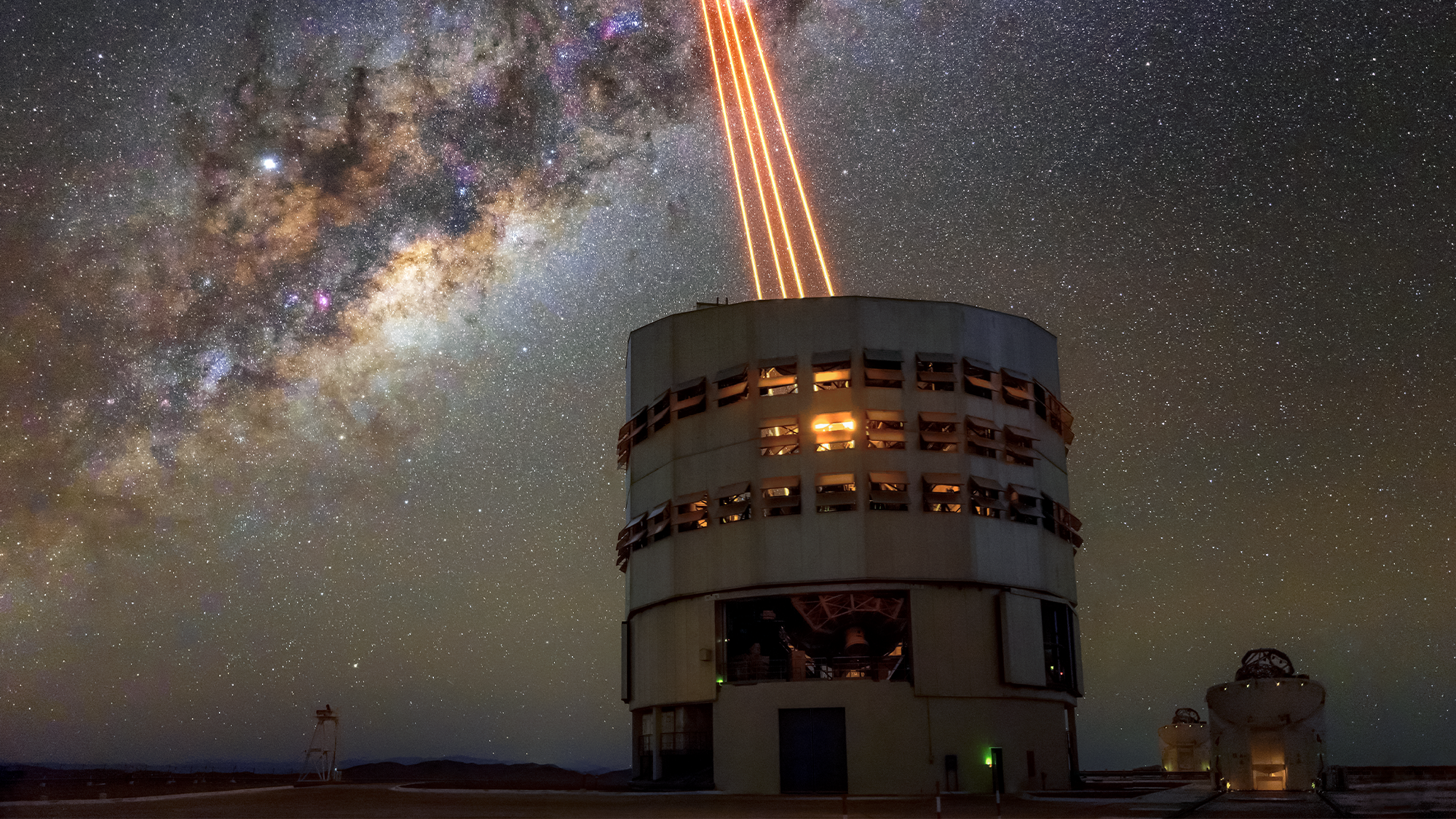

On September 26, 2022, eyes around the world were laser focused on NASA’s Double Asteroid Redirection Test (DART). The car-sized spacecraft collided with an asteroid named Dimorphous about 68 million miles from Earth. The experiment of Earth’s asteroid deflection capabilities was a smashing success, and the event is now giving astronomers the chance to learn more about the material expelled from a space rock’s impact.
Two papers using data and observations taken with the European Southern Observatory’s Very Large Telescope (VLT) in Chile were recently published, offering new insights into the debris clouds from asteroids.
[Related: DART left an asteroid crime scene. This mission is on deck to investigate it.]
The first study, published in the journal Astronomy & Astrophysics Letters, utilized an instrument called a Multi Unit Spectroscopic Explorer (MUSE) to follow the evolution of the cloud of debris from the collision for a month. Since asteroids are some of the building blocks that constructed our solar system, studying the material ejected from this impact can help astronomers learn more about how the solar system formed.
The authors found that the ejected cloud was bluer than the asteroid was before the impact with DART. This means that the cloud could have been made with very fine particles. In the initial hours and days after the test, clamps, spirals, and a long tail developed. The spirals and tail were redder than the initial debris cloud, which means they were possibly made with larger particles.

“Impacts between asteroids happen naturally, but you never know it in advance,” Cyrielle Opitom, study co-author and astronomer from University of Edinburgh, said in a statement. “DART is a really great opportunity to study a controlled impact, almost as in a laboratory.”
Using MUSE allowed the team to break up light emitted from the impact cloud into a rainbow-like pattern and then search for traces of different gasses. They particularly searched for oxygen and water coming from ice that was exposed by the impact with DART, but did not find either.
“Asteroids are not expected to contain significant amounts of ice, so detecting any trace of water would have been a real surprise,” said Opitom.
They were also not able to detect any traces of the propellant DART used, as there likely wouldn’t have been enough left in the tank from the spacecraft’s propulsion system.
A second paper was published in the Astrophysical Journal Letters analyzed how colliding with DART changed the surface of Dimorphous.This team, led by Stefano Bagnulo, studied particularly the change in polarization of the asteroid. When polarization occurs, light waves oscillate along a preferred direction rather than randomly. Tracking how this changes with the orientation of the asteroid relative to both Earth and the sun shows what the structure and composition of the asteroid’s surface is like.
[Related: NASA is pumped about its asteroid-smacking accuracy.]
To do this, they used the telescope’s FOcal Reducer/low dispersion Spectrograph 2 (FORS2) instrument. They found that the level of polarization suddenly dropped after DART’s impact with Dimorphous and that the overall brightness of the asteroid system increased at the same time.
The team believes that one possible explanation is the impact with DART may have exposed more pristine material from inside the asteroid. “Maybe the material excavated by the impact was intrinsically brighter and less polarizing than the material on the surface, because it was never exposed to solar wind and solar radiation,” said Bagnulo, an astronomer at Armagh Observatory and Planetarium and study co-author.
It is also possible that the direct impact destroyed the particles on the surface and ejected much smaller ones into the cloud of debris.Both studies highlighted what the VLT—which boasts four almost 30-foot-long telescopes—can do.
“This research took advantage of a unique opportunity when NASA impacted an asteroid, so it cannot be repeated by any future facility,” said Opitom. “This makes the data obtained with the VLT around the time of impact extremely precious when it comes to better understanding the nature of asteroids.”
Other studies on this “picture perfect” asteroid collision found that the asteroid lost over two million pounds after the collision, altered the asteroid’s moonlet orbit by about 33 minutes, and that the experiment showed that a “kinetic impactor mission” can alter an asteroid’s trajectory and is a step towards preventing future asteroid strikes.
